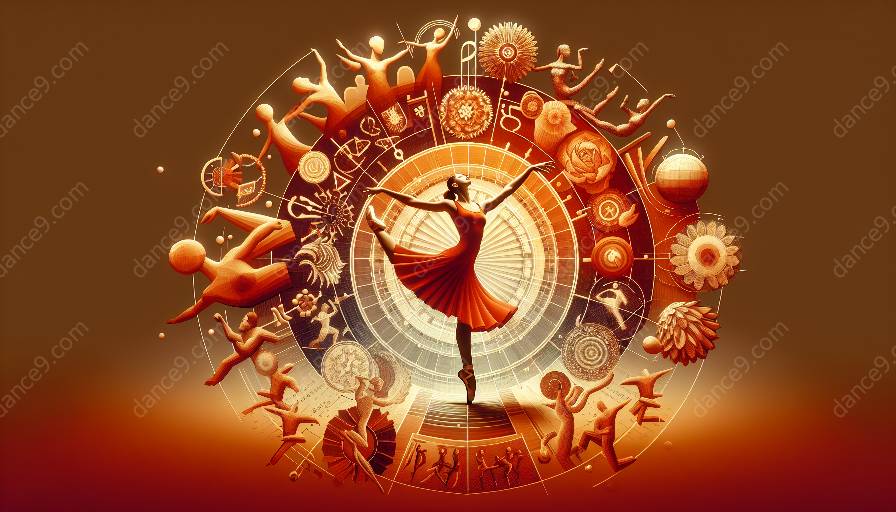Dance anthropology is a rich and multidisciplinary field that draws from various theoretical frameworks to explore the cultural, social, and historical aspects of dance. As an integral part of dance studies, understanding the theoretical underpinnings of dance anthropology provides valuable insights into the diverse ways in which dance intersects with human societies and contributes to the study and preservation of cultural heritage.
Theoretical Frameworks: A Foundation for Understanding Dance Anthropology
At its core, dance anthropology investigates the role of dance within different social, cultural, and historical contexts. The discipline draws upon diverse theoretical frameworks to analyze and interpret the significance of dance practices, rituals, and performances in various communities around the world. By incorporating theories from anthropology, sociology, cultural studies, and other related disciplines, dance anthropology offers a comprehensive lens through which to examine the multifaceted nature of dance.
Cultural Anthropology and Dance
In the realm of cultural anthropology, scholars explore how dance serves as a form of cultural expression, communication, and identity within specific societies. Theoretical approaches such as symbolic interactionism, cultural relativism, and performance theory are often employed to understand the symbolic meanings and social functions of dance in different cultural settings. By delving into the intricate connections between dance and culture, dance anthropologists gain a deeper understanding of how dance practices mirror, challenge, and reflect the values and beliefs of diverse communities.
Social Anthropology and Dance
Social anthropology provides valuable insights into the ways in which dance shapes and is shaped by social structures, power dynamics, and interpersonal relationships. Theoretical frameworks such as structural functionalism, conflict theory, and feminist anthropology allow researchers to critically examine the role of dance in constructing and reinforcing social hierarchies, gender norms, and collective identities. By applying these frameworks, dance anthropologists unravel the complex interplay between dance, social organization, and individual agency, shedding light on the intricate dynamics of human interactions through movement and expression.
Historical Anthropology and Dance
Within the domain of historical anthropology, the study of dance illuminates how cultural practices have evolved over time and how they have been influenced by historical events, globalization, and migration. Theoretical perspectives such as historical materialism, postcolonial theory, and cultural transmission theory are instrumental in tracing the historical trajectories of dance traditions and understanding their resilience, transformation, and adaptation in the face of societal changes. By employing these frameworks, dance anthropologists unravel the historical narratives embedded within dance forms, uncovering the ways in which dance embodies and reflects past experiences, struggles, and triumphs.
Interdisciplinary Perspectives: Bridging Dance Anthropology and Dance Studies
As an interdisciplinary field, dance anthropology intersects with dance studies to enrich our knowledge of dance as a cultural, artistic, and embodied practice. By integrating theoretical frameworks from dance theory, choreology, somatics, and performance studies, dance anthropology expands the scope of inquiry to encompass the corporeal, aesthetic, and phenomenological dimensions of dance. This interdisciplinary dialogue facilitates a holistic understanding of dance, addressing its not only its cultural and social dimensions but also its artistic, kinesthetic, and sensory qualities.
Embodied Knowledge and Performance Studies
Performance studies provide a valuable theoretical framework for understanding the embodied knowledge and sensory experiences embedded within dance practices. By examining the corporeal techniques, movement vocabularies, and somatic awareness of dancers, performance theory enriches the study of dance anthropology by foregrounding the lived and embodied dimensions of dance as a performative art form. This perspective acknowledges the ways in which dance is intimately linked to the human body, perception, and sensorial engagement, offering a nuanced understanding of how dance is both an embodied practice and a mode of artistic expression.
Dance Theory and Choreological Perspectives
Theoretical frameworks from dance theory and choreology contribute to the analysis of dance as a formalized system of movement, notation, and choreographic structures. By drawing upon concepts such as motif notation, Laban Movement Analysis, and dance composition theory, dance anthropologists can evaluate the formal and aesthetic aspects of dance, examining the ways in which movement patterns, spatial configurations, and choreographic principles shape the cultural and artistic significance of dance forms. This intersection between dance theory and dance anthropology underscores the importance of considering dance as a dynamic and culturally situated form of artistic expression.
Somatics and Kinesthetic Awareness in Dance Anthropology
Finally, the field of somatics offers theoretical insights into the kinesthetic, proprioceptive, and embodied awareness cultivated through dance practices. By integrating somatic principles from disciplines such as Feldenkrais Method, Alexander Technique, and BodyMind Centering, dance anthropologists can explore the somatic intelligence, kinaesthetic empathy, and bodily awareness embedded within dance traditions. This somatic perspective enriches the study of dance anthropology by foregrounding the ways in which dancers and communities cultivate a nuanced, kinesthetically attuned relationship with their bodies, movement, and environment.
Conclusion: Nurturing a Multifaceted Understanding of Dance Anthropology
Overall, the theoretical frameworks in dance anthropology provide a rich and dynamic foundation for investigating the cultural, social, and historical dimensions of dance. Through the interdisciplinary dialogue with anthropology, sociology, cultural studies, dance theory, and performance studies, dance anthropology not only expands our understanding of dance within diverse communities but also nurtures a multifaceted appreciation of dance as a living, embodied, and culturally significant practice. By embracing diverse theoretical perspectives and engaging in interdisciplinary collaborations, dance anthropology continues to evolve as a vibrant and inclusive field, fostering deeper understandings of the complex relationships between dance, culture, and human experiences.

















